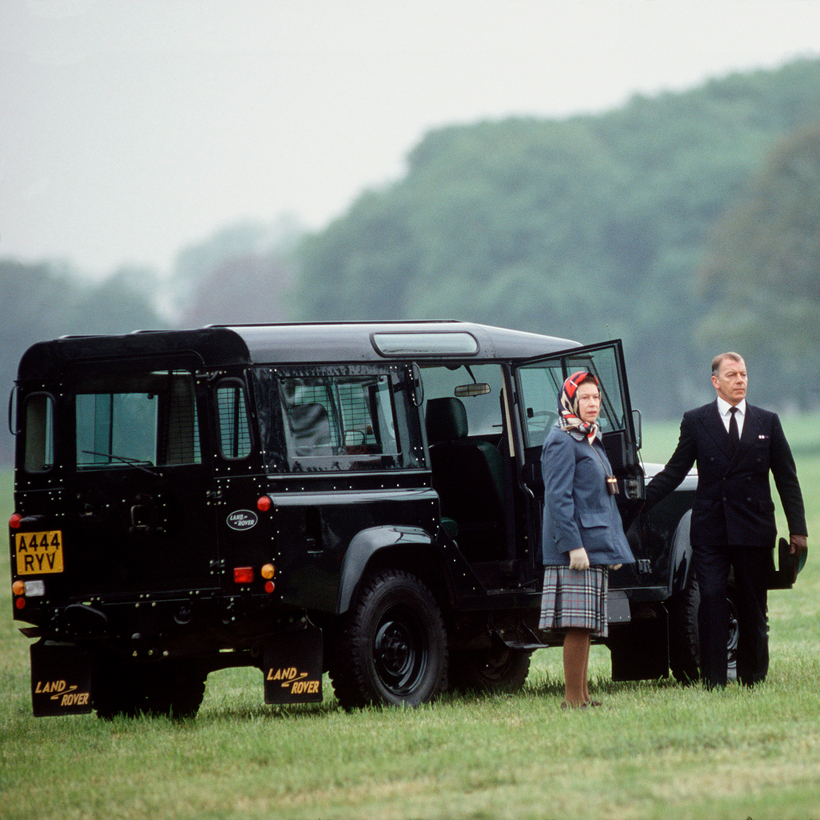The hierarchy of the true countryman’s private passions goes like this: his acres, his dog, his horses, his Land Rover, his house and barns, and then his family and other animals.
Consider the outcry that greeted recent news from Jaguar Land Rover — owned by the Mumbai-based Tata since 2008 — that, having halted production in Solihull in 2016, after 68 years and two million vehicles (70 percent of which are still on the road, including ours at the family farm on Exmoor), it is now ditching the Land Rover name too.
“The news honestly makes me want to vomit,” Mike Brewer, the presenter of the TV show Wheeler Dealer, told Car Dealer magazine. “I am totally and utterly shocked.”
Automotive history is being erased in front of our eyes. We’ve already said farewell Fiesta and goodbye Golf. Now it’s so long Land Rover.
Jaguar Land Rover will henceforth style itself “JLR”, like a K-pop boy band. This means the legendary Land Rover marque — the preferred wheels of the late Queen since 1953, the conveyance the Duke of Edinburgh redesigned for his own dead body, the star of Bond films and Hollywood blockbusters — has wilted in the face of both emissions and safety regs and the electric dreams of its Indian owners.

A formerly British car for which the words “legendary”, “iconic” and “heritage” could have all been coined has been sent to the scrapyard so JLR can elevate its electric-first luxury plans for four marques: Jaguar, Range Rover, Discovery and Defender (which survive as models but without Land Rover branding).
The end of the road for Land Rover has been greeted with howls of protest louder and more poisonous than the exhaust and fumes at a scuffle for “Sorned” vehicles (for the uninitiated, that’s notifying DVLA that your car is off-road for tax purposes).
Owners are stunned, as if Hovis had turned its back on the bread-baking business, or Heinz removed its name from cans of beans. It seems so careless.
This is the one car that everyone in Britain loves. The Range Rover, let’s face it, is a tiny bit of a knob’s car — or so the local farmers tell me — (David Beckham drives a pimped-up white one) even though early versions weren’t so flash and the selling point of the Rangie was that you could put your sheep in the back during the day and your wife in a ball gown in the front at night.
“The news honestly makes me want to vomit.”
“I’ve got a 17-year-old Range Rover and Lisa has one that is six years old,” Jeremy Clarkson tells me, somewhat defensively, when I ask if he has a Land Rover or a Range Rover. “Literally everyone [ie in the Cotswolds …] drives a Range Rover. Farmers round here all have Mitsubishi L200 pickup trucks.”
I rest my case. Even if Clarkson’s Range Rover is 17 years old, the Land Rover is the real people’s car.
“The loss of the Land Rover brand feels like a devastating blow to one of the most recognized car marques in the world,” says Ben Fogle, author of a best-seller about the car, “the final transition from blue-collar historical utilitarian vehicles to white-collar luxury vehicles. Farmers, builders and soldiers simply don’t have the buying power or bank balance of bankers and trust fund managers.”
I feel the same. When my father hit 60, his six children conferred. What do you give the man who has everything including a 1971 Series 2 Land Rover? Easy. Another Land Rover! We got him an ex-army Land Rover Wolf but it didn’t work out. “You couldn’t drive from Exford to Porlock as it had such an extended wheelbase it couldn’t go round the bends,”
he explained.
We still drive his Series 2 khaki rag-top with metal benches in the back that’s used for wooding, taking kids to the river, and visitors on a mandatory life-or-death expedition to the top of the farm via vertical cleeves.

A few years ago I thought it would be fun to refurbish it. A nice woman called Susan Tonks, the bespoke restorations program leader from Jaguar Land Rover (as it then was), kindly came to the farm to inspect it. We thought her quote of $160,000 was a little toppy and, anyway, we like it as it is: a rough farm vehicle, not a poshed-up Chelsea tractor.
The journalist Simon Mills says his Series 3 is the only vehicle the architect John Pawson will allow to be parked outside his house near Daylesford, as only the Land Rover passes his high minimal aesthetic bar. “Getting rid of one of the most recognizable brand names and vehicles in the world is like Coke changing the taste of Coca-Cola,” he says.
The only upside? The secondhand market is hotter than July. The Queen’s 1968 Land Rover Series IIA sold at Goodwood last month for $85,000, and you can’t get a secondhand one for less than five figures. They are a collector’s item.
Meanwhile, owners are so outraged they are predicting a reprieve for the car that stole the heart of Queen and country. “The new Defender is a fine car but it was never really a Land Rover Defender. It was a Range Rover Defender. The loss of the Land Rover marque seems to me to be the final nail in the coffin for their historical legacy,” Fogle says elegiacally, “a way of severing their ties to the past to pursue the future. They say that you should never become bigger than the brand. Lose Land Rover and you lose the very essence of what the car is.”
The Queen shed a tear when the Royal Yacht Britannia was mothballed. The end of the road for the British car that once conquered the world would have her turning in her grave. Let’s hope it’s only Tata for the Land Rover for now.
Rachel Johnson is a journalist and author. Her books include The Mummy Diaries, Notting Hell, and Rake’s Progress: The Madcap True Tale of My Political Midlife Crisis


